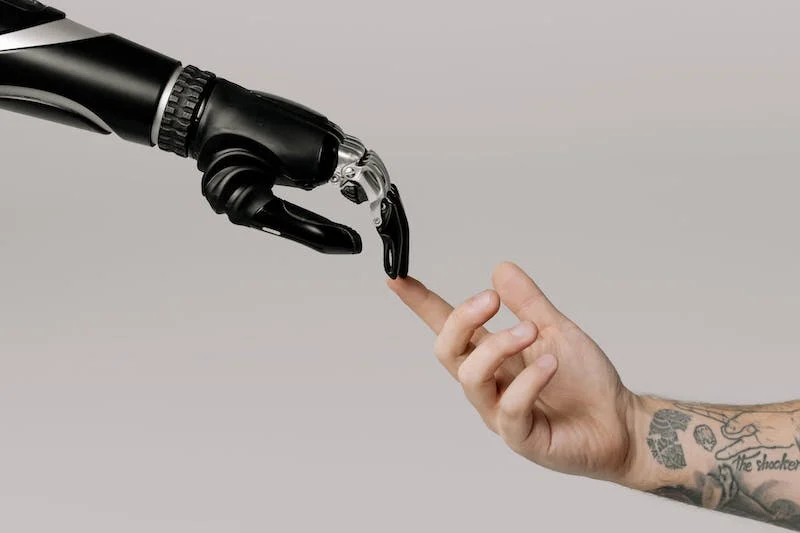Contents
- 1. What Is Hyper-Personalization — and Why It Matters Now
- 2. Predictive Analytics: Seeing Around the Corner
- 3. The Technology Behind the Transformation
- 4. 6 Real-World Applications Changing Business in 2025
- 5. Why It’s Working: The Business Case for Hyper-Personalization
- 6. Challenges and Ethical Questions
- 7. The Future: Predictive Personalization Gets Even Smarter
- 8. How to Get Started
- Conclusion: The New Era of Anticipatory Business
Meta Description:
Discover how Hyper-Personalization and Predictive Analytics are helping brands create smarter, data-driven customer experiences. Learn six powerful ways AI and behavioral insights are reshaping marketing, pricing, and engagement in real time.
In 2025, every click, scroll, and search tells a story. Businesses that can understand and act on those stories in real time are winning the race for customer loyalty and growth.
Welcome to the era of Hyper-Personalization and Predictive Analytics — where brands don’t just react to customer needs, they anticipate them.
From personalized product recommendations to dynamic pricing and intelligent customer support, this data-driven approach is transforming how companies attract, retain, and delight customers.
1. What Is Hyper-Personalization — and Why It Matters Now
Traditional personalization was about greeting customers by name in an email or offering generic product suggestions. Hyper-personalization goes several steps further. It uses AI, machine learning, and real-time behavioral data to deliver individualized experiences across every digital touchpoint.
According to Datagraphic’s 2025 Digital Trends Report, hyper-personalization is “the natural evolution of personalization — a shift from marketing to the audience to marketing with the individual.”
It’s not just about demographics anymore. It’s about context: where the user is, what device they’re on, their purchase history, current intent, and even emotional cues.
“Consumers expect brands to understand them in the moment,” says Emma Clark, Head of Digital Strategy at Datagraphic. “If your brand can’t predict and respond instantly, you’re invisible.”
2. Predictive Analytics: Seeing Around the Corner
Hyper-personalization wouldn’t exist without predictive analytics, the science of using past and present data to forecast future behavior.
By analyzing patterns in customer interactions, purchase histories, and external data (like economic indicators or seasonal trends), predictive models can anticipate what a customer will do next — whether that’s abandoning a cart, upgrading a plan, or canceling a subscription.
This isn’t guesswork; it’s mathematical foresight.
“Predictive analytics allows businesses to make proactive decisions rather than reactive fixes,” explains data scientist Tomás Ruiz in a feature for Wise Business. “It’s the difference between putting out fires and preventing them.”
According to Wise, companies leveraging predictive models see up to 20–30% improvements in retention and 15% increases in cross-sell rates compared to traditional approaches.
3. The Technology Behind the Transformation
Several emerging technologies are making hyper-personalization and predictive analytics more accessible and effective than ever before:
- Artificial Intelligence (AI): Machine learning models analyze vast datasets to find subtle patterns in consumer behavior.
- Natural Language Processing (NLP): Enables chatbots and voice assistants to understand tone, sentiment, and intent.
- Real-Time Data Processing (RTDP): Systems like Apache Kafka and Google Dataflow process millions of data points instantly, ensuring recommendations are timely and relevant.
- Customer Data Platforms (CDPs): Centralize fragmented customer data into unified profiles used by marketing, sales, and support teams.
- Edge Computing: Allows personalization to occur closer to the user (on devices or local servers) for lightning-fast response times.
This technological stack forms the foundation of what analysts at Gartner call the “Intelligent Experience Layer” — a seamless fusion of data, analytics, and user interaction.
4. 6 Real-World Applications Changing Business in 2025
1️⃣ Dynamic Pricing
Retailers and airlines are using predictive models to adjust prices based on demand, customer loyalty, and purchase likelihood.
Amazon, for instance, updates prices millions of times per day — optimizing for conversion rates and profit margins in real time.
2️⃣ Smart Product Recommendations
Streaming services like Netflix and Spotify analyze viewing and listening patterns to serve recommendations that feel almost psychic.
E-commerce brands use similar systems to suggest products tailored not only to a user’s history but to their current mood and context.
3️⃣ Predictive Customer Support
AI chatbots powered by NLP can now detect frustration or hesitation in a customer’s tone and escalate issues before they become complaints.
Predictive analytics also helps identify customers at risk of churn, enabling proactive retention strategies.
4️⃣ Content Personalization
News outlets and digital media platforms use real-time engagement metrics to tailor article recommendations, push notifications, and headlines.
This helps drive both higher engagement and longer session times — the lifeblood of ad-supported platforms.
5️⃣ Inventory and Supply Chain Forecasting
By combining internal sales data with external signals (like weather or social media trends), predictive models help businesses forecast demand more accurately.
Retailers can avoid overstocking, reduce waste, and ensure the right products are available when and where they’re needed.
6️⃣ Healthcare and Well-Being
Hospitals and fitness tech companies are integrating predictive analytics to anticipate patient needs or detect anomalies in health data.
Wearables like Fitbit or Apple Watch now provide insights that predict potential issues before they escalate.
5. Why It’s Working: The Business Case for Hyper-Personalization
The numbers speak for themselves.
- 91% of consumers say they are more likely to shop with brands that offer relevant recommendations.
- 80% of companies using predictive analytics report improved customer satisfaction scores.
- Hyper-personalized email campaigns generate up to 6x higher transaction rates than standard marketing emails.
(Stats compiled from Datagraphic’s 2025 Insights Report and Wise’s E-commerce Forecast).
In short, personalization isn’t just nice to have — it’s a competitive necessity. As customer expectations evolve, the winners will be those who predict and deliver exactly what users want before they even ask.
6. Challenges and Ethical Questions
While the promise is immense, the road to full-scale hyper-personalization isn’t without obstacles.
Data Privacy and Trust
Collecting vast amounts of behavioral data comes with serious privacy implications. Businesses must comply with GDPR, CCPA, and emerging data-ethics standards. Transparency is key: users want to know how their data is used and what value they get in return.
Algorithmic Bias
AI systems learn from historical data, which may reflect existing biases. If unchecked, these biases can perpetuate unfair outcomes in pricing or recommendations.
Data Overload
Too much data can paralyze decision-making. The challenge isn’t gathering more data, but using the right data effectively.
“It’s about quality, not quantity,” Clark emphasizes. “Smart personalization depends on relevant, clean, and ethically sourced data.”
7. The Future: Predictive Personalization Gets Even Smarter
As AI models evolve, predictive systems will move from forecasting what will happen to explaining why it happens — and even recommending the best possible action.
This next generation of analytics, known as Prescriptive AI, will empower businesses to automatically trigger marketing campaigns, reorder stock, or alert human agents — all based on predicted outcomes.
Meanwhile, Generative AI tools (like ChatGPT and Jasper) are already helping brands create personalized content at scale — from ad copy to customer emails — aligned with each user’s interests and preferences.
By 2027, Gartner predicts that 90% of digital businesses will use some form of predictive or prescriptive analytics in customer engagement.
8. How to Get Started
For businesses ready to embrace hyper-personalization and predictive analytics, here’s a roadmap:
- Audit Your Data: Identify what customer data you have, where it resides, and how accurate it is.
- Unify Customer Profiles: Use a Customer Data Platform (CDP) to integrate disparate data sources.
- Start Small: Launch pilot projects—such as personalized email recommendations or predictive churn analysis—before scaling.
- Invest in Explainable AI: Choose models that offer transparency to build trust and meet compliance requirements.
- Measure and Iterate: Continuously test, evaluate, and refine models for better outcomes.
As Datagraphic notes, the real magic happens when data, technology, and human empathy align — when analytics amplify understanding, not replace it.
Conclusion: The New Era of Anticipatory Business
Hyper-personalization and predictive analytics mark a turning point in the evolution of digital commerce.
We’ve moved beyond “personalization” as a marketing gimmick. The future belongs to anticipatory businesses — those that listen, learn, and adapt at the speed of data.
In a world where attention spans are shrinking and choices are endless, the brands that succeed will be the ones that truly know their customers — sometimes better than customers know themselves.
Or, as Emma Clark puts it best:
“In 2025, personalization isn’t about being seen — it’s about being understood.”
🔗 Sources & Further Reading
- Datagraphic – Digital Transformation Trends 2025
- Wise – Five Key E-Commerce Trends for 2025
- Gartner – Predictive Analytics and Customer Experience 2025
- Forbes – How AI Is Personalizing the Customer Journey
See related coverage: The Next Wave of Smart Tech: How Wearables and Earable Devices Are Redefining Human Sensing




